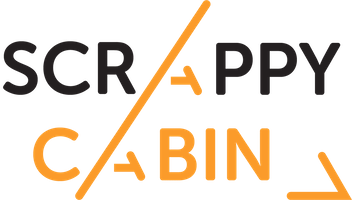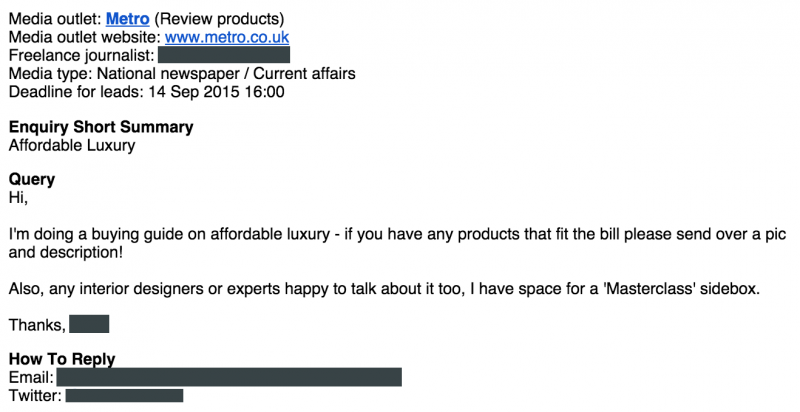Press Request Alerts
Press requests are an absolute gold mine for earning high-value links. A lot of people can be put off by them due to the amount of time it can take each day to go through them all, but they're probably not hacking the process like I do!
In short, press request alerts are requests for sources of information from journalists. Let's say you're a journalist putting together an article on wearable technology for The Guardian. Perhaps you need a quote from an industry expert or some products that you can feature within your article? Well, all you need to do is send out a request to a press service and you can wait for someone to get back to you.
All you need to do is get these requests sent to your inbox and then respond. A couple of years ago I replied to a request from a journalist at The Guardian and bagged a link from their website. It took me less than 2 minutes to respond.
Here's an example of what a typical request can look like:
It's honestly as simple as responding to the email.
Step 1: Sign Up for Press Request Alerts
The first step is to sign up for a service that sends you alerts from journalists. There are a lot of them out there and each have their own pros and cons. Here's a list to get you started:
- HARO (one of the most popular free services)
- ResponseSource (paid service aimed more at the UK)
- Muck Rack (paid service)
- Gorkana (paid service)
- Source Bottle (free service)
- Press Quest (UK free service)
- NARO PR (free service)
- #JournoRequest (Twitter hashtag used by journalists)
- #PRrequest (Twitter hashtag used by journalists)
Step 2: Organise Your Inbox
You're going to get a ton of emails each day with requests from journalists. Just one of these services will fire between 50-100 requests per day, so make sure you're ready for it.
To get things in order, this is the process that I take with my email inbox:
- Create individual folders within your inbox for each of the different services you've signed up for (e.g. ResponseSource, HARO, Muck Rack, Source Bottle, etc.).
- Create rules for any new emails from each of these services to go into their respective folders (here's how for Outlook and Gmail).
- Create sub-folders underneath each main folder that are broken down into different topics. For example, I have folders marked as Growth, SaaS, SEO, Startups, etc.
- Create further rules on any of the emails you receive that include keywords related to each topic to be filed under the relevant sub-folder. For example, any request mentioning SaaS will go into my SaaS sub-folder.
- The final thing that I do is create rules on any of the emails from these services that will flag an email that comes through from a publication that I’m targeting. In my case, I have alerts for any press requests that come through from Forbes, Entrepreneur, Wall Street Journal, and a few others.
Pro Tip: Get SMS Alerts
The quicker you respond to high-value requests, the more likely you are to be featured. For really high-value requests, you can use IFTTT to send you an SMS whenever a request comes through fitting a specific criteria.
I created an IFTTT recipe that sends me an SMS whenever a request around SEO is sent to me. You can edit this recipe to suit your own needs.
Step 3: Responding to Requests
The key here is to keep this concise and to the point.
Here's an email template that I use, but you'll need to personalise it accordingly:
Subject: HARO: {{Insert the subject that the reporter has asked you to comment on}}
Body: Hi {{First Name}},
My name is {{Your name}}, {{Your job title and company}}. Here are my answers to your questions:
- One or two sentences (max) with a comment related directly to the reporter’s question.
- One or two sentences (max) with a comment related directly to the reporter’s question.
- One or two sentences (max) with a comment related directly to the reporter’s question.
- One or two sentences (max) with a comment related directly to the reporter’s question.
Let me know if you need anything else.
{{Signature}}

